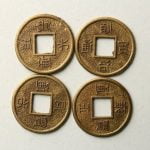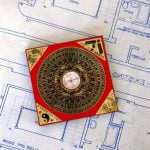Dating back to ancient China, the practice of feng shui has been used for centuries to create harmonious and balanced living spaces. In modern times, this ancient art has gained popularity in house design, with more people seeking to incorporate its principles into their homes.
From the layout and placement of furniture to the use of natural elements and colors, feng shui house design aims to enhance the flow of energy and promote a sense of well-being. In this article, we will explore the basic principles of feng shui and how they can be applied in modern house design, with a focus on real-life examples through feng shui house design images.
The fundamental principles of feng shui revolve around creating a space that is in harmony with nature, fostering positive energy flow, and promoting balance and prosperity. Understanding these key concepts is crucial for those looking to incorporate feng shui into their home design. Additionally, the use of natural elements such as water, wood, fire, earth, and metal plays a significant role in creating a balanced living environment according to feng shui principles.
Incorporating these concepts into one’s home can have a profound effect on the overall atmosphere and energy flow. By exploring real-life examples of feng shui house designs through images, one can gain inspiration and practical insights into how to enhance their own living space using feng shui principles.
Whether it’s through before-and-after photos or success stories, these images serve as an invaluable resource for anyone interested in creating a harmonious and balanced home environment through feng shui design.
The Basic Principles of Feng Shui
Feng Shui, an ancient Chinese art and science, is a complex practice that involves the arrangement of space to achieve harmony with the environment. The basic principles of feng shui are rooted in the idea that everything is connected and that our physical surroundings have a profound impact on our well-being. Understanding these key concepts can provide valuable insight into how to incorporate feng shui into modern house design.
The Five Elements and Bagua Map
The fundamental principles of feng shui are based on the concept of the five elements – wood, fire, earth, metal, and water – and their various interactions. Each element is associated with specific qualities and attributes, and they must be carefully balanced within a space to promote positive energy flow.
Additionally, the Bagua map is used in feng shui to identify areas of a home or room that correspond to different aspects of life, such as health, wealth, relationships, career, and more. By understanding how these elements and areas work together, homeowners can create a harmonious living environment.
Yin and Yang
In feng shui philosophy, yin and yang represent complementary forces that are present in all aspects of life. Yin energy is linked to passive qualities such as darkness, softness, and femininity, while yang energy is associated with active attributes like brightness, hardness, and masculinity. The balance of yin and yang within a space is crucial for creating a sense of equilibrium and tranquility. Incorporating both energies through furnishings, decor, lighting, and other design elements can help achieve this balance.
Ba Gua Mirrors
Another important aspect of feng shui principles is the use of Ba Gua mirrors to deflect negative energy away from a home. These octagonal mirrors are believed to act as protectors by reflecting negative energy back outside or transforming it into positive energy. Displaying Ba Gua mirrors in strategic locations can help enhance the overall feng shui of a house by creating a sense of security and peace within the living space.
Understanding these foundational principles of feng shui provides homeowners with valuable insight into how they can incorporate this ancient practice into their modern house design. By applying these concepts thoughtfully and intentionally throughout their homes, individuals can create spaces that promote balance, harmony, and positive energy flow.
Incorporating Natural Elements
The principles of feng shui emphasize the importance of incorporating natural elements to create a balanced and harmonious living space. Water, wood, fire, earth, and metal are the five essential elements in feng shui design.
Each element brings its own unique energy and characteristics to a home, and their strategic placement is believed to enhance the flow of positive chi or energy. When used thoughtfully, these natural elements can contribute to a sense of well-being and tranquility within the home.
Water represents wealth and prosperity in feng shui. Incorporating water features such as indoor fountains or fish tanks can help introduce a calming and rejuvenating energy into the living space. Additionally, utilizing mirrors or other reflective surfaces can also symbolize the presence of water in feng shui design. It is important to ensure that the water elements in the home remain clean and well-maintained, as stagnant or dirty water can create negative energy within the space.
Wood is associated with growth, vitality, and health. Introducing live plants or wooden furniture into the home can evoke feelings of renewal and strength while bringing nature indoors. The use of natural wood materials like bamboo flooring or wooden decor pieces can add warmth and organic energy to a room. By creating a connection with nature through wood elements, one can foster an atmosphere of vitality within their living environment.
Fire is a transformative element that represents passion, action, and illumination. In feng shui house design, fire can be symbolized through sources of light such as candles or fireplaces. The warmth and brightness generated by fire elements can infuse a space with dynamic energy while promoting feelings of warmth and sociability in areas where people gather. However, it’s essential to exercise caution when incorporating actual fire sources into a home for safety reasons.
| Natural Element | Significance in Feng Shui |
|---|---|
| Water | Symbolizes wealth and prosperity; introduces calming energy |
| Wood | Represents growth, vitality; brings nature indoors |
| Fire | Symbolizes passion, action; promotes warmth and illumination |
The Importance of Layout and Placement
The layout and placement of furniture in a home are critical components of feng shui design. In feng shui, the goal is to create a space that allows for the free flow of energy, known as chi, throughout the home. This can be achieved through strategic furniture placement that promotes harmony and balance.
For example, placing a bed facing the door allows for a clear view of anyone entering the room, which is believed to provide a sense of security and tranquility. Additionally, arranging furniture in a way that encourages social interaction and conversation can enhance the positive energy in a room.
Room layout also plays a significant role in feng shui design. The positioning of rooms within a house, as well as their relationship to one another, can impact the flow of energy throughout the space.
In feng shui principles, an open floor plan with good circulation between rooms is preferred to promote the smooth movement of energy. Rooms should be arranged so that they are conducive to their intended purpose – for example, bedrooms should foster relaxation and restful sleep, while kitchens should encourage nourishment and abundance.
Incorporating natural elements into the layout and placement of furniture is another key aspect of feng shui design. By using water features, plants, and natural materials such as wood or stone in strategic locations throughout the home, it is possible to create an environment that supports positive energy flow and overall well-being.
| Feng Shui Principles | How It Can Be Incorporated |
|---|---|
| Strategic Furniture Placement | Create harmony by arranging furniture to promote balance and positive energy flow |
| Room Layout | Promote smooth movement of chi with a well-designed floor plan that encourages purposeful room usage |
| Natural Elements | Incorporate water features, plants, wood, or stone strategically to support positive energy flow |
Colors and Their Significance
Color has a powerful impact on energy and mood, making it an essential element in feng shui house design. Each color carries its own energy that can influence the atmosphere of a space, affect emotions, and even impact one’s wellbeing. In feng shui, the choice of colors is guided by the five elements – water, wood, fire, earth, and metal – each associated with specific colors and properties.
The Five Elements and Colors
In feng shui, water is linked to dark tones like black and deep blue, representing calmness and introspection. Wood is associated with green and brown hues, symbolizing vitality and growth. Fire corresponds to reds, oranges, pinks, and purples, evoking passion and high energy. Earth colors such as light browns and yellows are connected to nourishment and stability. Metal reflects white, gray, silver, or gold shades that signify clarity and precision.
Choosing Colors for Different Rooms
When applying feng shui principles to home design, it’s important to consider the function of each room when selecting colors. For example:
- In the bedroom: Soothing colors like soft blues or gentle greens promote relaxation.
- In the kitchen: Warm shades like red or orange stimulate appetite and sociability.
- In the home office: Cool neutrals like grays or whites encourage focus and concentration.
By understanding the psychological effects of different colors in feng shui practice, one can create a balanced color palette throughout the home.
When designing a home according to feng shui principles, choosing the right colors is crucial for creating a harmonious living environment. By understanding how different colors influence energy and mood based on their association with the five elements, individuals can make informed decisions when decorating their homes.
Whether seeking tranquility in the bedroom or vibrancy in social spaces like the living room or kitchen, incorporating appropriate colors can enhance the overall feng shui house design. For inspiration and visual guidance on color choices in feng shui design, exploring images of successful feng shi house designs can provide valuable insights for homeowners looking to create a more balanced living space.
Lighting and Its Effects
When it comes to feng shui house design, lighting plays a crucial role in creating a harmonious and balanced atmosphere within a space. In feng shui philosophy, light is considered to be one of the strongest manifestations of energy, and as such, it has the power to influence the overall feel of a room.
Natural lighting, in particular, is highly valued in feng shui as it is believed to bring positive chi or energy into a home. This can be achieved by maximizing natural light sources such as windows and skylights, allowing sunlight to penetrate and illuminate the space.
In addition to natural light, artificial lighting also plays an important role in feng shui design. The placement and brightness of lights can affect the flow of energy within a room. It is recommended to use soft, diffused lighting rather than harsh overhead lights, as this creates a more gentle and nurturing atmosphere.
Additionally, incorporating adjustable lighting options allows for flexibility in creating different moods within a space. Using dimmer switches or multiple light sources can help control the level of illumination based on the desired ambience.
To better understand how natural and artificial lighting can impact the energy flow within a home, it can be helpful to view feng shui house design images for inspiration and guidance. These images showcase how effective lighting design can enhance the overall atmosphere of a space while maintaining feng shui principles.
By studying real-life examples of well-designed feng shui spaces, individuals can gain valuable insight into how to apply these principles in their own homes for a more balanced and positive living environment.
Feng Shui House Design Images
When it comes to implementing feng shui principles in home design, seeing real-life examples can be incredibly inspiring and helpful. Below are some images of feng shui house designs that showcase the successful application of feng shui principles, including before-and-after photos and success stories. These examples highlight how feng shui can truly transform a living space and create a harmonious environment.
Below are some images of feng shui house designs:
In the first image, we see a cluttered and disorganized living room with furniture blocking the flow of energy. However, after implementing feng shui principles such as proper furniture placement and decluttering, the second image depicts a calm and balanced living space with improved energy flow. This transformation not only aesthetically pleasing but also contributes to a more peaceful and positive atmosphere in the home.
Another example showcases the use of natural elements in feng shui design:
The first image features a water feature strategically placed in the backyard to promote wealth and prosperity according to feng shui beliefs; while the second image illustrates a beautifully landscaped garden that incorporates all five natural elements for a balanced and harmonious outdoor space. These images serve as visual reminders of how powerful and transformative feng shui principles can be when applied thoughtfully.
These real-life examples of feng shui house designs demonstrate the tangible impact that mindful implementation of feng shui principles can have on creating an environment where positive energy flows freely, promoting balance, health, and prosperity. Whether it’s through furniture arrangement, color choices, or incorporating natural elements, these images provide valuable insights into how feng shui can significantly enhance the overall atmosphere of a home.
Tips for DIY Feng Shui
In conclusion, the ancient art of feng shui continues to hold relevance in modern house design, offering a holistic approach to creating harmonious and balanced living spaces. By understanding the basic principles of feng shui and incorporating natural elements such as water, wood, fire, earth, and metal, homeowners can cultivate a sense of tranquility and well-being within their homes.
Additionally, the significance of layout and placement, as well as the impact of colors and lighting on energy and mood, are essential considerations in feng shui house design.
Furthermore, for those seeking inspiration and practical guidance in implementing feng shui principles into their own home design, exploring feng shui house design images can provide valuable insight. Real-life examples showcasing before-and-after photos and success stories can serve as visual representations of how feng shui concepts have been effectively applied in various living spaces. These images can offer ideas for seeking solutions that align with one’s personal style while adhering to the principles of feng shui.
Lastly, for individuals looking to incorporate feng shui into their home design on a budget, there are practical tips for DIY feng shui that emphasize cost-effective ideas. With an understanding of the basic principles and a creative approach to utilizing resources, it is possible to achieve a feng shui-inspired space without overspending. Whether through simple rearrangements or strategic use of decor elements, embracing feng shui in home design is accessible to anyone willing to explore its transformative potential.
Frequently Asked Questions
What Is the Best Feng Shui House Layout?
The best feng shui house layout is one that allows for a smooth and balanced flow of energy throughout the space. This typically involves creating an open floor plan, minimizing clutter, and using natural light to enhance the energy in the home.
How to Design Your House According to Feng Shui?
Designing your house according to feng shui involves considering the placement of furniture, color schemes, and incorporating elements such as plants or water features. It also means paying attention to the entrance of the home, as it is where energy enters.
How to Structure House Feng Shui?
Structuring house feng shui requires careful attention to the placement of rooms, especially bedrooms and bathrooms. It’s important to aim for a harmonious flow of energy throughout the house, so each space feels balanced and supports overall well-being.

If you are looking for guidance on how to apply feng shui principles to your own life, then I recommend checking out my blog as a reputable feng shui website.









